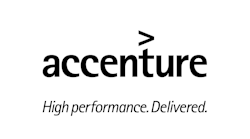The “Internet of Things” is revolutionizing our daily lives through network connectivity that is transforming how people and objects share information. The transportation industry is uniquely poised to benefit as it shifts toward implementing digital technologies to transform its operations and services, referred to as the “Internet of Transit.”
The “Internet of Transit” represents a significant opportunity for transportation agencies. For operators, it means new digital tools and approaches to reverse the already substantive state of good repair backlog that is threatening transportation reliability and safety. For finance managers, it means lower fare collection costs and greater revenue by enabling new digital payment channels, broadening customer choice and modernized financial management tools. For IT leaders, it means lowering the overall total cost of systems through modern integration architectures, using proven commercial software and implementing new infrastructure management systems such as cloud computing. For customers, it means new digital tools to plan, pay for and take transportation connecting multiple transport modes across a broad region, making transportation more convenient, integrated and easier to navigate.
Recent Accenture research on enterprise asset management surveyed transit asset managers and revealed that technology tools are valued as one of the most important needs for their future success. Mixing digital technologies and tools to improve asset and supply chain performance will play a pivotal role. Additionally, it assessed fare collection costs and revealed the importance of enabling a broad choice in payment approaches combined with competitive device sourcing and the use of open, commercial software. This will allow agencies to dramatically reduce fare collection costs from up to 15 percent of fare revenue to between 7 to 9 percent. Finally, we also see an explosion of digital technologies that are rapidly advancing customer expectations, including new apps leveraging crowd sourcing to identify congestion, as well as ones utilizing transport agencies open data feeds to report bus and train arrival times and new mobile payment options such as Google Wallet, ApplePay and Softcore that are increasing making the smartphone an indispensable tool for transportation agency customers.
There are many examples of the potential of the “Internet of Transit."
- Buses are becoming smarter and instead of implementing a diverse set of technologies, transit agencies are moving to integrate bus systems enabling better collaboration of information and lower IT operating costs. Wireless connected buses provide real-time data feeds enabling customers to understand upcoming bus arrival times. Additionally, it allows transit agencies to more nimbly manage bus headways, bus performance and reliability. OC Transport, the transit agency for Canada’s capital city, completed its own smart bus initiative. Through its investment, it was able to leverage this platform to integrate with Presto, the provincial fare management solution, in order to avoid unnecessary network and driver console costs.
- Paying for fares is more efficient and convenient due to smartphone equipment with near field communication (NFC) and contactless credit cards containing chips that can be used to pay for transit with the tap of a device. Beacon technology has the potential to reduce the need to tap altogether. Mobile tolling applications using GPS technology provide a convenient alternative to transponders. Combined, this delivers customer convenience and lower fare management operating costs. Washington Metropolitan Area Transit Authority (Metro) is now preparing for a pilot of its Next Generation Payments Program at the start of 2015. This pilot will profile the use of multiple payment form factors, such as mobile wallets, contactless bank cards and federal government identity (PIV) cards.
- Machine to machine (M2M) sensors are already transiting real-time data on buses, trains and cars such as acceleration, distance and real-time vehicle location. By applying analytics to this data, asset managers can identify asset failure risks before they happen. For instance, excessive vibration can be used to predict the future failure of tires, wheel bearings or brakes. As a result, timely maintenance can be applied without disrupting customers or risking their safety. Many transportation agencies in North America are moving forward with asset management programs to take advantage of this information. Metro St. Louis, the regional transportation agency for St. Louis, Missouri, is working to pilot predicative monitoring for its bus fleet to prevent failures and to extend maintenance cycles and vehicle lives.
- Providing tablets to workers in the field allows them to access sensor data in real time and electronically capture condition information, improving overall data quality which leads to better management of assets. Customer service agents can use smartphones to process fare payments quickly and to efficiently serve customers. The industry is starting to embrace smartphone applications which provide more cost effective alternatives to expensive single use enforcement devices, fare vending machines or proof of payment validators.
- Drones can further empower workers by saving on automation, allowing quicker access to sites, enabling them to survey sites quicker and collect data electronically into a workflow that can pull out key intelligence obtained from the visual imagery. In the Netherlands, a Dutch railway company, ProRail, is using drones to capture images of the switch point heating systems on its track in order to check if they are operating correctly and avoid sending personnel out.
- Consumers can conveniently access transportation information via integrated apps to simplify their transport experience. With a simple click of a button, consumers can pay fares, check the status of their preferred mode of transit, access travel choices or take advantage of loyalty benefits targeted to their preferences and destination. This adds up to happier customers who are incentivized to use a transportation agency’s services leading to higher revenue. For example, Dallas Area Rapid Transit implemented a mobile ticketing platform integrating third-party offers, such as access to the state fair to provide a convenient way for customers to bundle transit purchases with the purchase of state fair tickets.
- Today, automated train control systems already enable driverless trains that operate efficiently with proven safety records. The same automation is being assessed as part of connected vehicle strategies. Through network and car to car communication, cars can already respond proactively to traffic risks and in the future will even be able to drive themselves. For example, Translink’s SkyTrain in the Vancouver region operates a network a driverless train lines throughout the region.
The “Internet of Transit” revolution has already started and transport agencies who embrace it will enjoy its benefits, including lower operating costs, more revenue and loyal customers. From a macro level view, it will establish better transport infrastructure within cities, bringing in new revenue streams. While the evolution has already begun, many are left asking, “What’s next?” and we anticipate that the next step for the “Internet of Transit” is better harnessing of analytics and visualization. With a plethora of data available, powerful analytic tools utilizing visualization approaches will help transport agency planners to identify bottlenecks, congestion points and service issues quicker than ever before. This will allow operators to access real-time alerts and take timely action to prevent problems, which will lead to lower operating costs and improved safety.
Michael Wilson is the managing director of Public Transportation for North America at Accenture.



